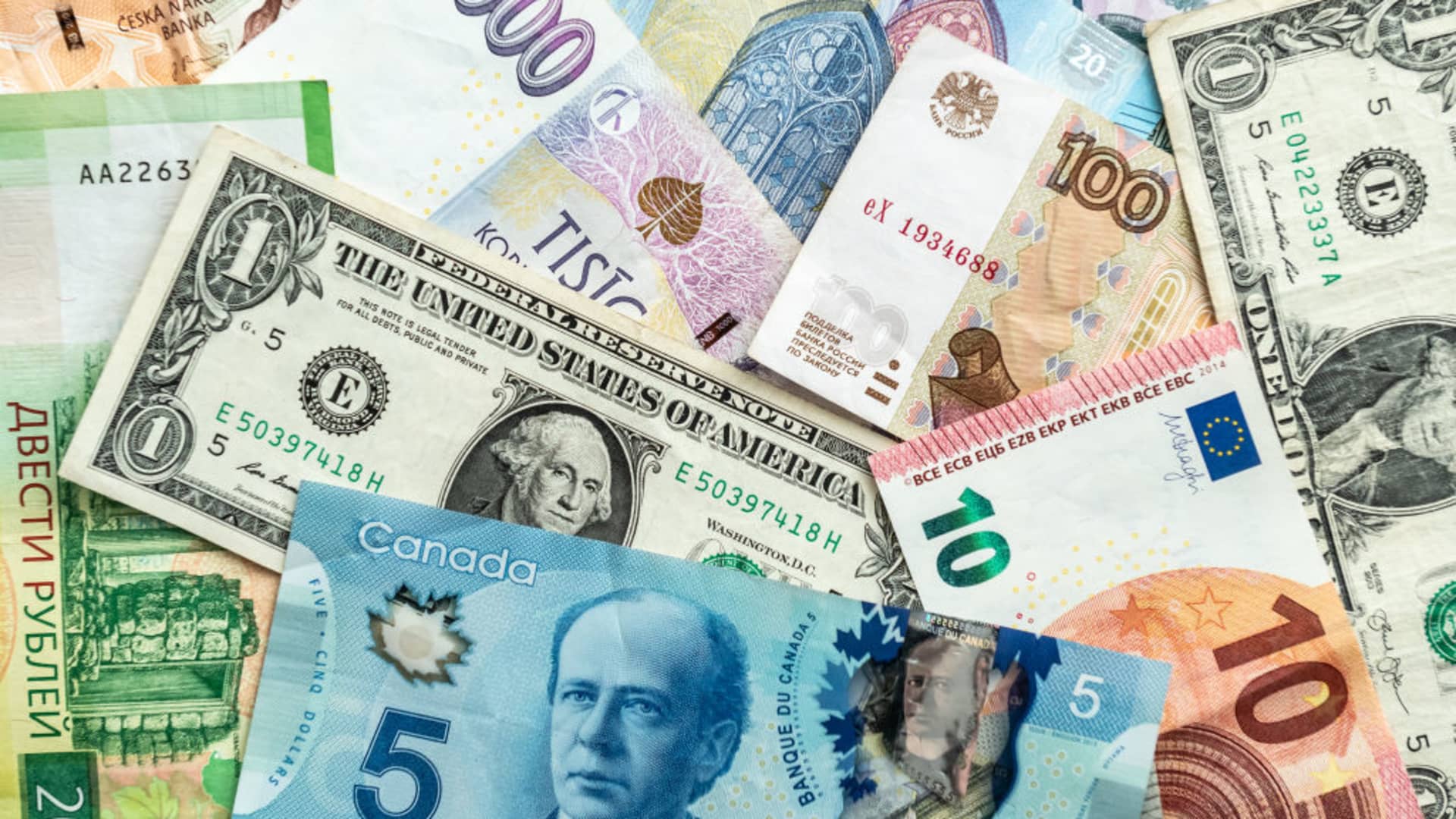2024 is the year of the rate cut pivot — here’s when the world’s central banks will budge

Euros, U.S. dollars, Canadian dollars, Russian rubles and Czech korunas lie on a table as banknotes.
Picture Alliance | Picture Alliance | Getty Images
As inflation loosens its grip in most economies, investors are closely monitoring interest rate decisions, with markets expecting a slew of rate cuts this year.
While rates in most economies are set to remain elevated in 2024, economists expect a mild rollback late this year, the Economist Intelligence Unit said in a recent report. Most central banks sharply hiked policy rates from early 2022 in a bid to stifle inflation.
China and Japan remain exceptions in the global tightening cycle, though Beijing’s rates have started to ease slightly, said the global intelligence firm. EIU also expects the Bank of Japan will exit its negative interest rate policy in the second quarter.
United States
Euro zone
The central bank acknowledged that inflation was easing faster than it anticipated and lowered its annual inflation forecast from an average of 2.7% to 2.3%. The ECB has a 2% inflation target.
Switzerland
Swiss inflation in February rose 1.2% from a year ago, the lowest reading in almost two and a half years, fueling hopes that the Swiss National Bank could trim interest rates in its March 21 meeting.
The SNB’s current policy rate stands at 1.75%, and the central bank has an inflation target range of between 0% and 2%. According to LSEG, there’s a more than 40% chance of a 25-basis-point cut in March, which would take the SNB’s key rate down to 1.5%.
UBS expects the SNB to wait until the second quarter for its first key interest rate cut, while not ruling out the possibility of a cut this month.
Bank of Canada
Turkey
Turkey’s central bank kept its interest rate steady at 45% in February, ending its tightening cycle after eight straight hikes, with many expecting it to hold for most of 2024. The country’s inflation currently stands at around 65%.
JPMorgan said in a research note that the Turkish central bank may cut its policy rate in November and December, keeping its year-end policy rate forecast of 45%.
Australia
In a recent note, ANZ noted that Australia’s economy experienced a “continued slowdown” in the second half of 2023 as fourth-quarter GDP grew just 0.2% from the prior quarter. That comes after third-quarter GDP edged 0.3% higher from the previous three-month period.
New Zealand
Auckland Savings Bank does not expect the RBNZ to start cutting the cash rate until November.
Indonesia
Indonesia’s central bank kept its benchmark policy rate at 6% in its recent meeting.
While the Southeast Asian nation’s consumer price inflation is now within the Bank Indonesia’s targeted range of 1.5% to 3.5% for the year, Indonesia’s central bank governor is considering a 75 basis point cut only in the second semester of the year.
“We are still watching closely is about the global spillover… mainly of the impact of U.S. monetary policy direction,” Bank Indonesia governor Perry Warjiyo recently told CNBC’s JP Ong.
BMI, a Fitch Solutions research unit, expects the bank to lower the benchmark rate to 5% by the end of 2024, starting in the second half of the year in tandem with the U.S. and other developed market central banks “in order to not raise undue depreciatory pressures on the Indonesian rupiah.”
Bank of Japan
Unlike its peers, economists expect the Bank of Japan to raise interest rates this year instead of cutting.
The BOJ is expected to move toward ending its negative interest rate policy by April, contingent on annual wage negotiations, said economists at Oxford Economics and Macquarie.
Spring wage negotiations are an important factor in whether Japan’s inflation has sustainably met the BOJ’s 2% target, a prerequisite for the BOJ to end its negative rate policy.
South Korea
The BOK could still be one of the first in Asia to cut rates, said Goldman Sachs senior Asia economist Goohoon Kwon, citing ongoing disinflation and subdued private consumption.
A strong rebound in exports driven by semiconductors due to the advent of AI will allow the BOK to be less constrained by U.S. monetary policy and inflation, Kwon said.
So who’s first?
“The Bank of Canada is my candidate to be the first to cut,” Carl Weinberg, chief economist at High Frequency Economics told CNBC. He explained that Canada’s CPI, excluding shelter prices, is rising by just 1.7%. That’s below the central bank’s inflation target and Weinberg noted that all the prices the BOC can control in the economy are rising less than the inflation target mandates.
“2024 will be the year of the rate cut pivot,” Weinberg added.
But Asian central banks are unlikely to cut ahead of the Fed as a strong U.S. dollar means that most Asian currencies remain relatively weaker, said Morgan Stanley.
The potential for further depreciation could still lend some higher inflation risks to these countries, the investment bank’s economists said in a report.
“While inflation is coming off, in most of the region’s economies it has either just reached the target range or is still closing the gap to target range,” Morgan Stanley said.










